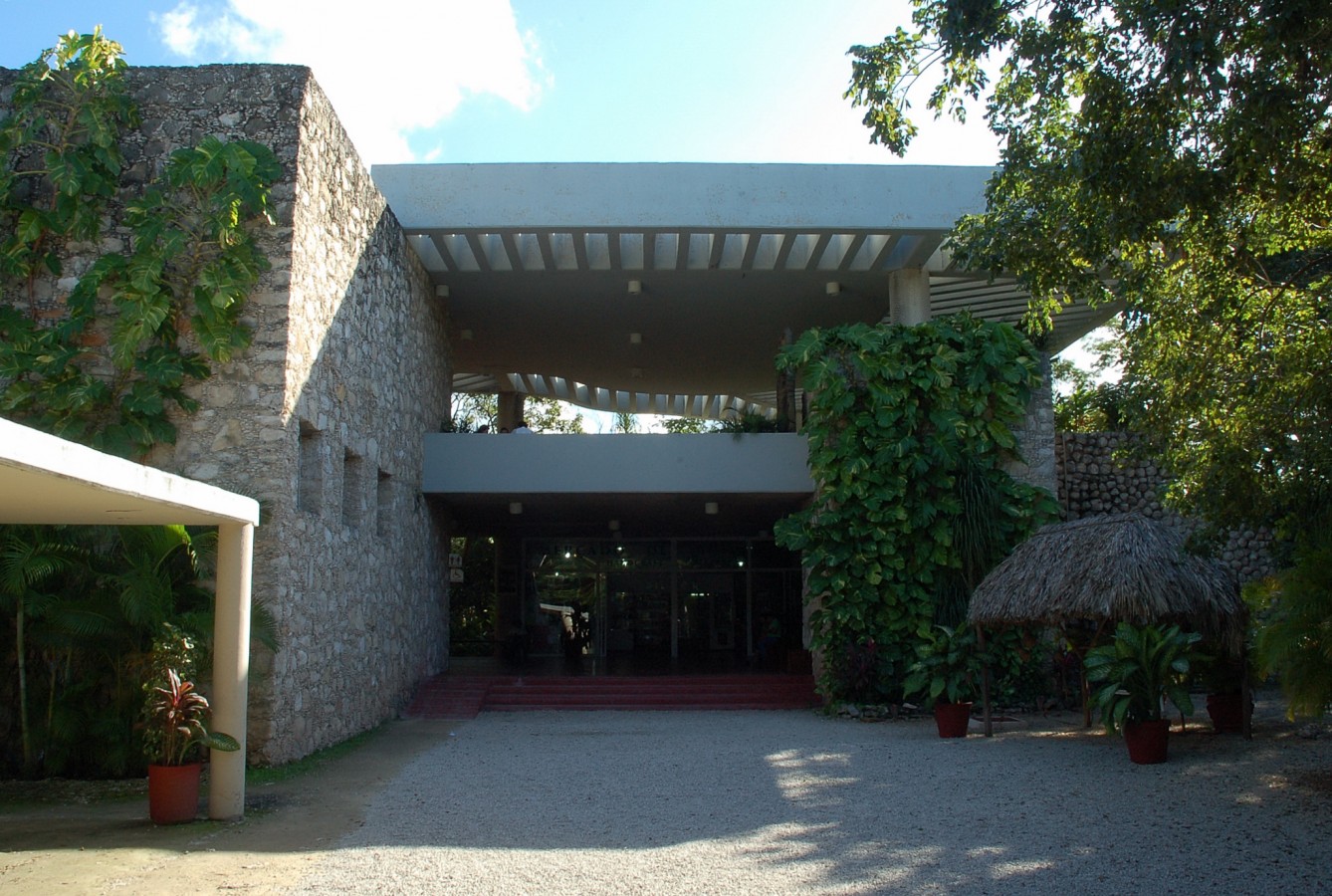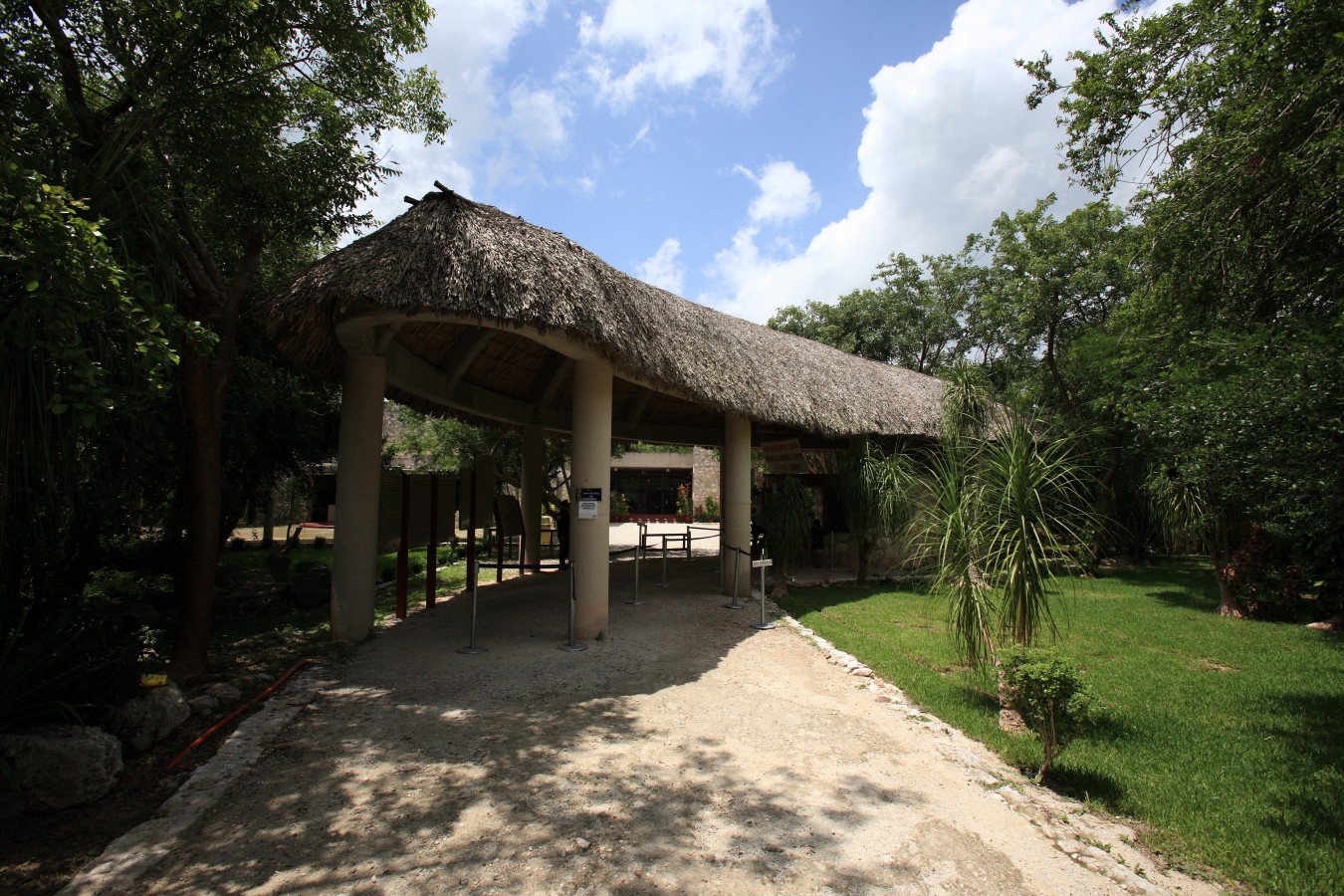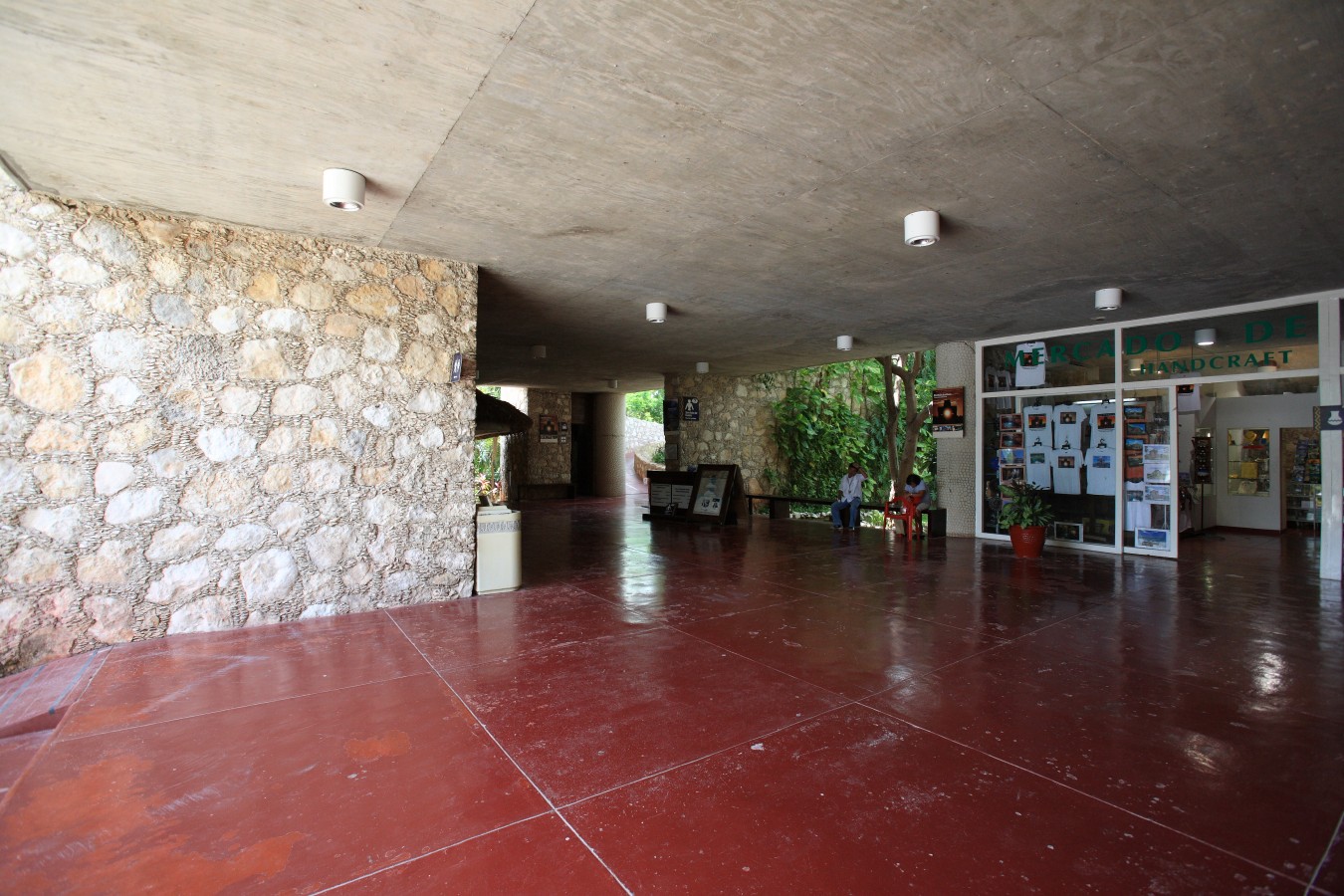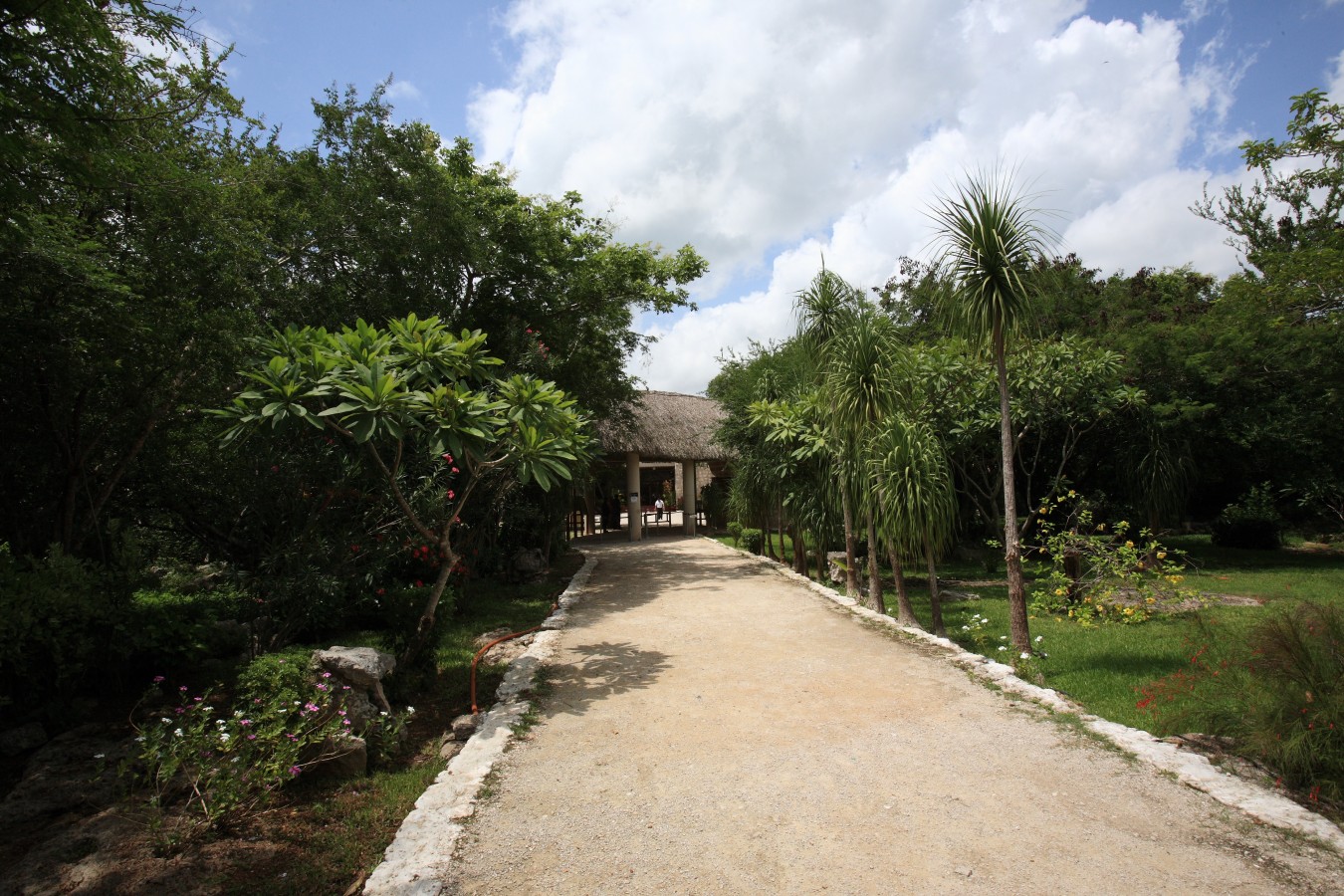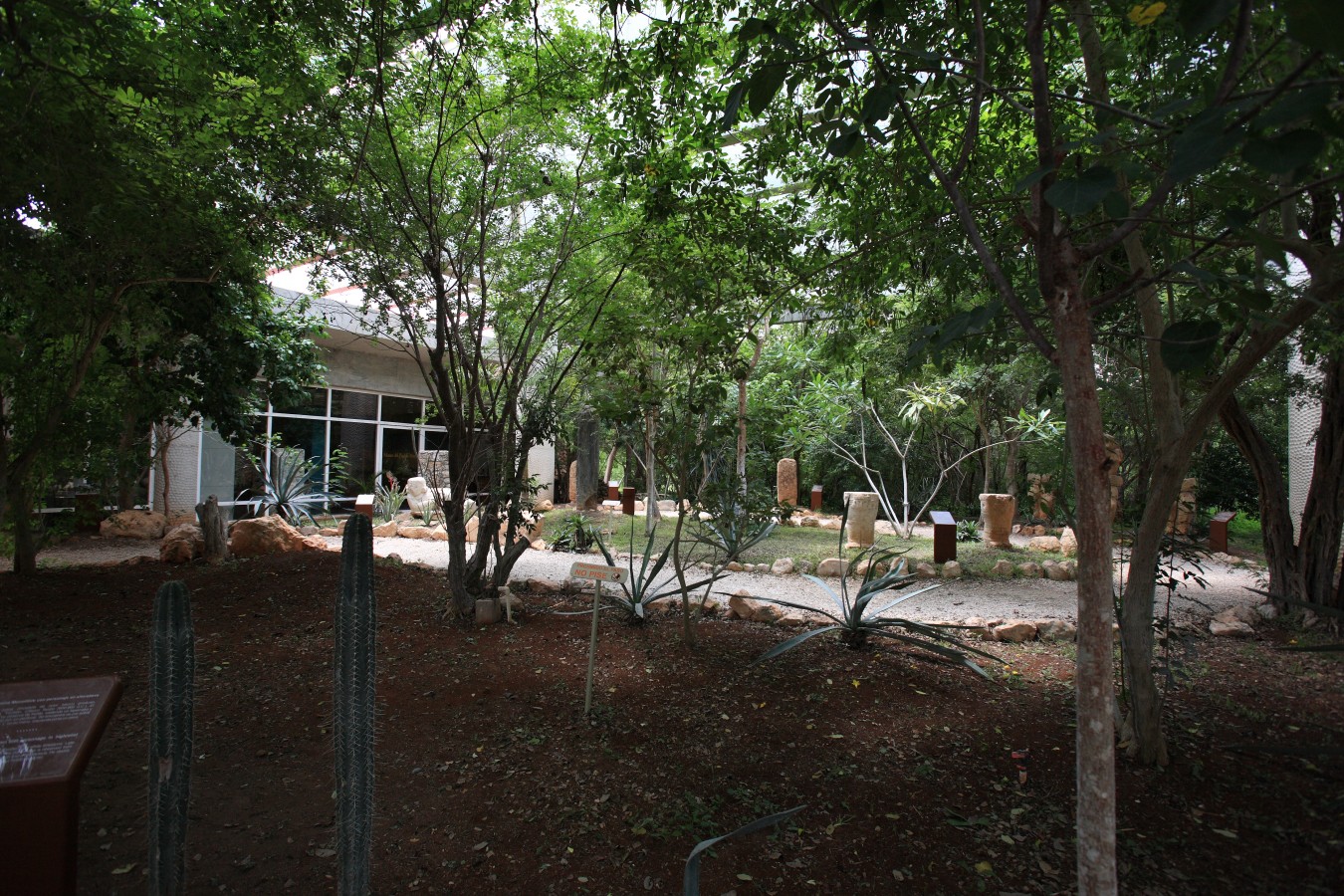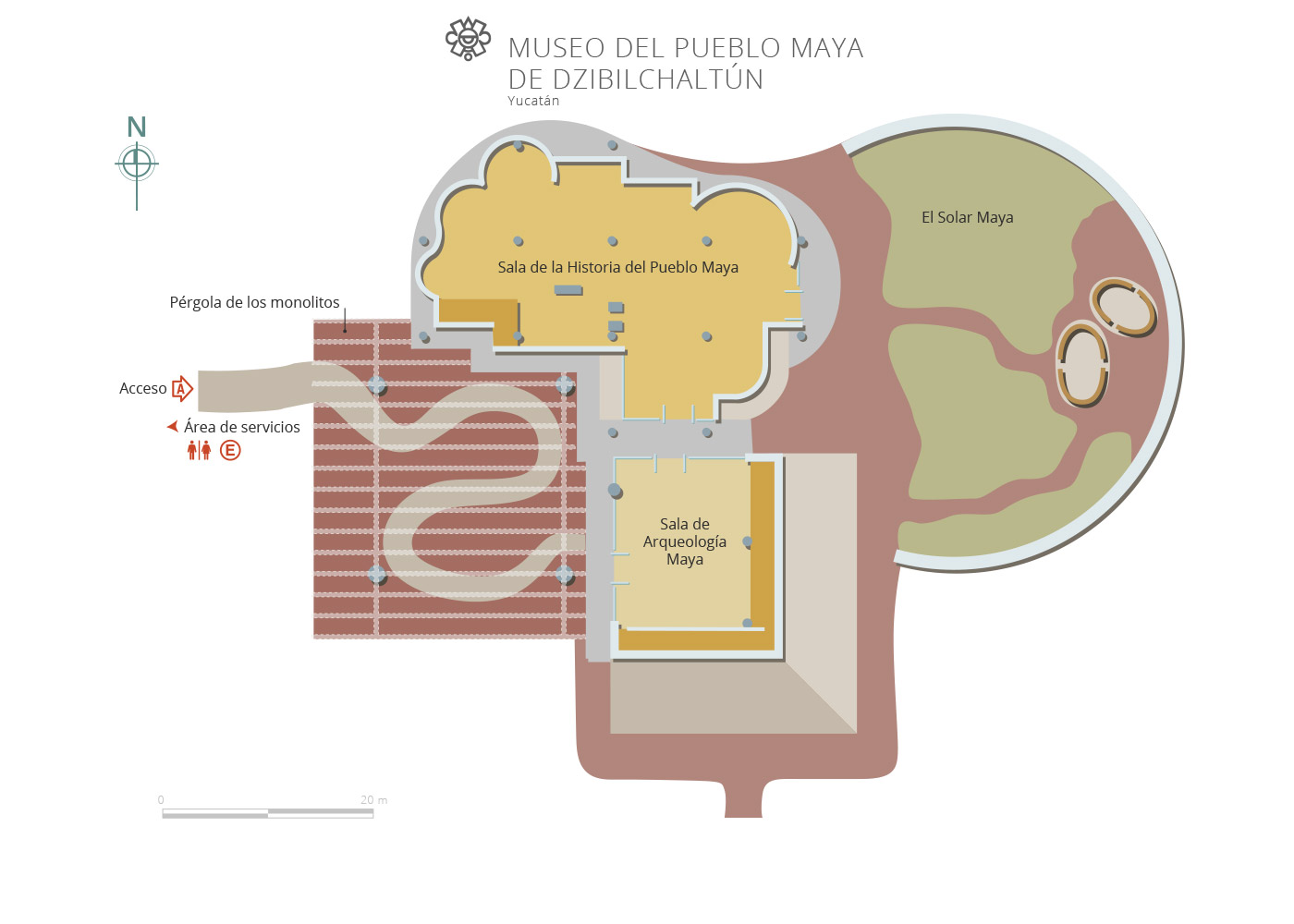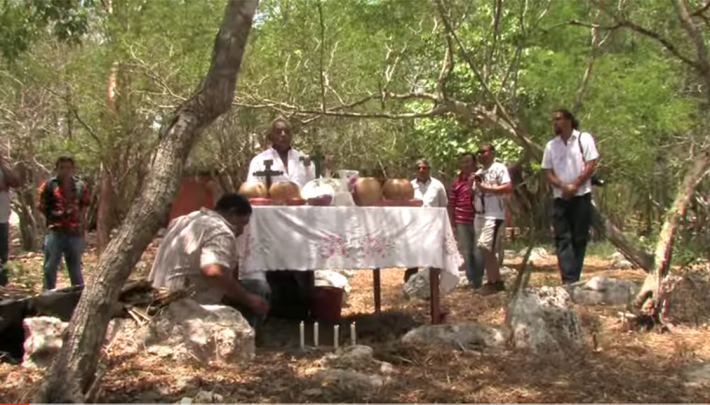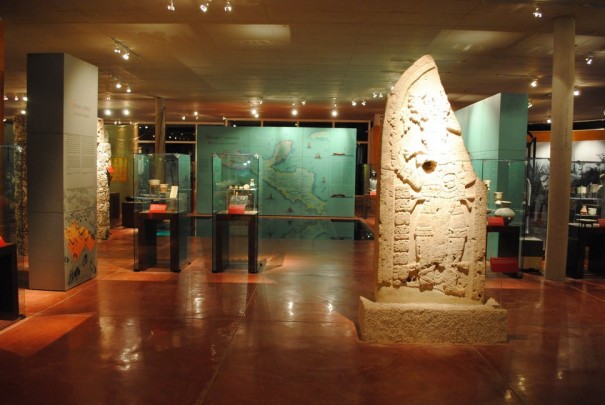Display covering the development of Mayan culture from pre-Hispanic times to the present day. Situated to the north of the city of Merida, Dzibilchaltun is both an archeological site and a national park. Designed by the architect Fernando González Gortázar in a contemporary style, the site museum is a dispersed complex in the forest, which clearly relates to the site on which it was built. It exhibits 700 archeological and historical artefacts summarizing 3,000 years of Mayan culture.
It consists of four exhibition halls: 1. Pergola of the Monoliths. Displaying monolithic pre-Hispanic sculptures from the states of Yucatán, Campeche and Quintana Roo along a path which leads through a garden of native plant species. 2. Mayan Archeology. Focusing on the pre-Hispanic period, with ceramic and architectural pieces from Chiapas, Campeche and Yucatán displayed to illustrate themes such as Mayan cosmology, the origins of humankind, the relationship between humans and nature, the gods, the social hierarchy, painting, writing, labor specialization and the calendar. 3. The History of Dzibilchaltún. Containing finds from the archeological excavations. It also covers contact with the Spanish and the conquest of the Mayan people, the vice-regal period and the formation of Yucatec identity. 4. Mayan House. Annex with a reconstruction of a typical rural Mayan building using traditional building techniques.

El Gobierno del Estado de Yucatán cobra una cuota adicional de $74 pesos a nacionales y $184 pesos a extranjeros
-
+52 (999) 922 0193
-
This email address is being protected from spambots. You need JavaScript enabled to view it.
-
TWITTER

